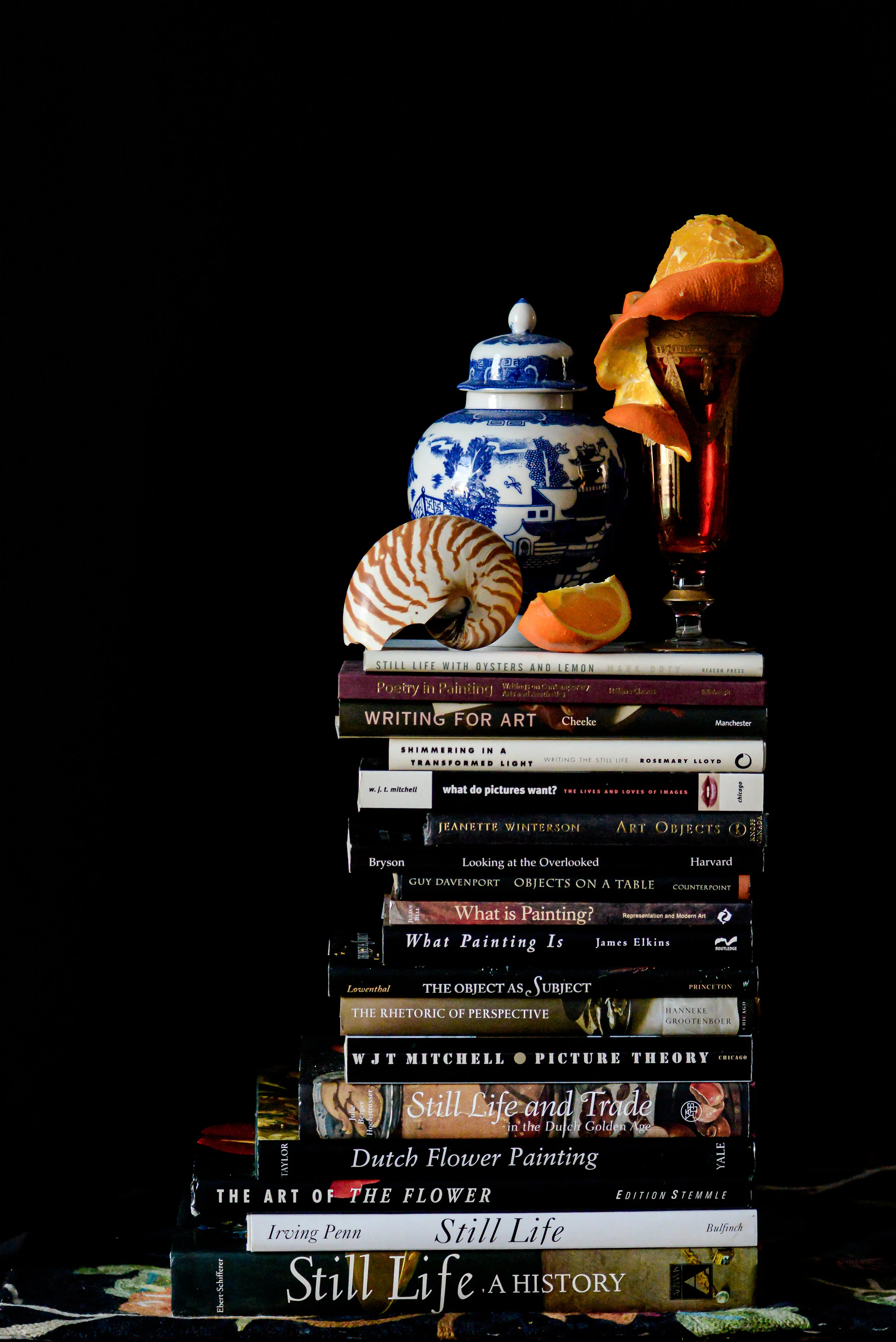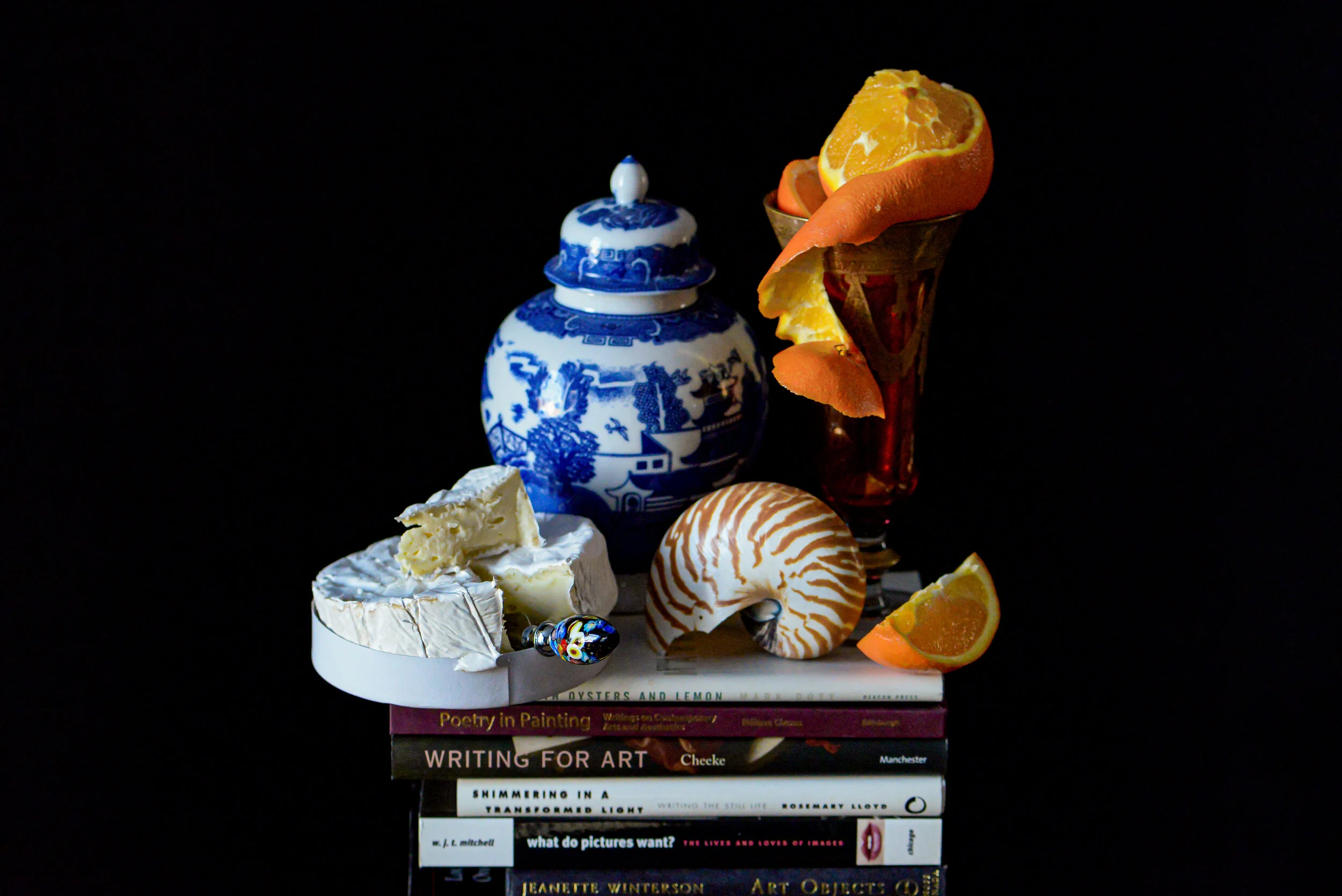Between Sadness and Gratitude
There was a poem recently on The New York Times Magazine selected by the wonderful Naomi Shihab Nye, by Mark Sanders. In the intro to the poem NSN says:
“To engage the concept of a “still life” painting, this tender poem by Mark Sanders pauses and holds. Memory permeates awareness again and again, illuminating the absent, suggesting not that we keep it alive but that it may keep us alive. Sometimes the plums or ceramic pitchers in a painting feel more vivid than the ones on our tables right in front of us. It may take, as the poet William Stafford used to say, a certain tilt of the head to perceive it. Here in this poem, no one is gone.”
Sanders talks about “that silent place, / between sadness and gratitude…”
Please read the entire poem here.
I think that’s what always draws me into still life — the beautiful sadness, all of the absence that surrounds any still life image, my gratitude for what has been, the energy that surrounds what is held in that silent space.
Have you heard of Michaelina Wautier? There’s an interesting video about her on Sotheby’s. (Also below). I’ll be perfectly honest — I’d only come upon her work recently in a search on memento mori.
It’s a wonder, really, that any art is remembered. It’s nearly impossible to be recognized in one’s own time, which is something we might as well be fine with.
I was happy when this weekend I suddenly felt like throwing together a still life. The light was lovely at last, after a very dark and record breaking cold snap. I had to work in the afternoon, so I only had a short interval, but it came together easily and I didn’t stop to question it, or to fuss much. I pulled a few more books from the shelf so that the spines weren’t all just black, for a change. One of the titles is Looking at the Overlooked, which is a phrase that still conveys so much when it comes to still life, and in particular art by women.
It’s interesting to think about memory, though, isn’t it? Does it keep us alive? Certainly it surges up into our present and it’s hard to put some things to rest, to find peace. We hover between sadness and gratitude, between anguish and joy, remembering and forgetting. It’s good, perhaps, to rest one’s eyes on a stack of books, an orange, a nautilus shell.
What is the point of making art when we know it will disappear through time, and that in the here and now maybe only our closest friends will pay any attention to it?
The artist Anthony Gormley has said this:
“But art is not technology; it is useless but vital. It is through art that we communicate what it feels like to be alive. When you ask “what is the point of art?” you could reformulate the question to “what is the point of human beings?””








